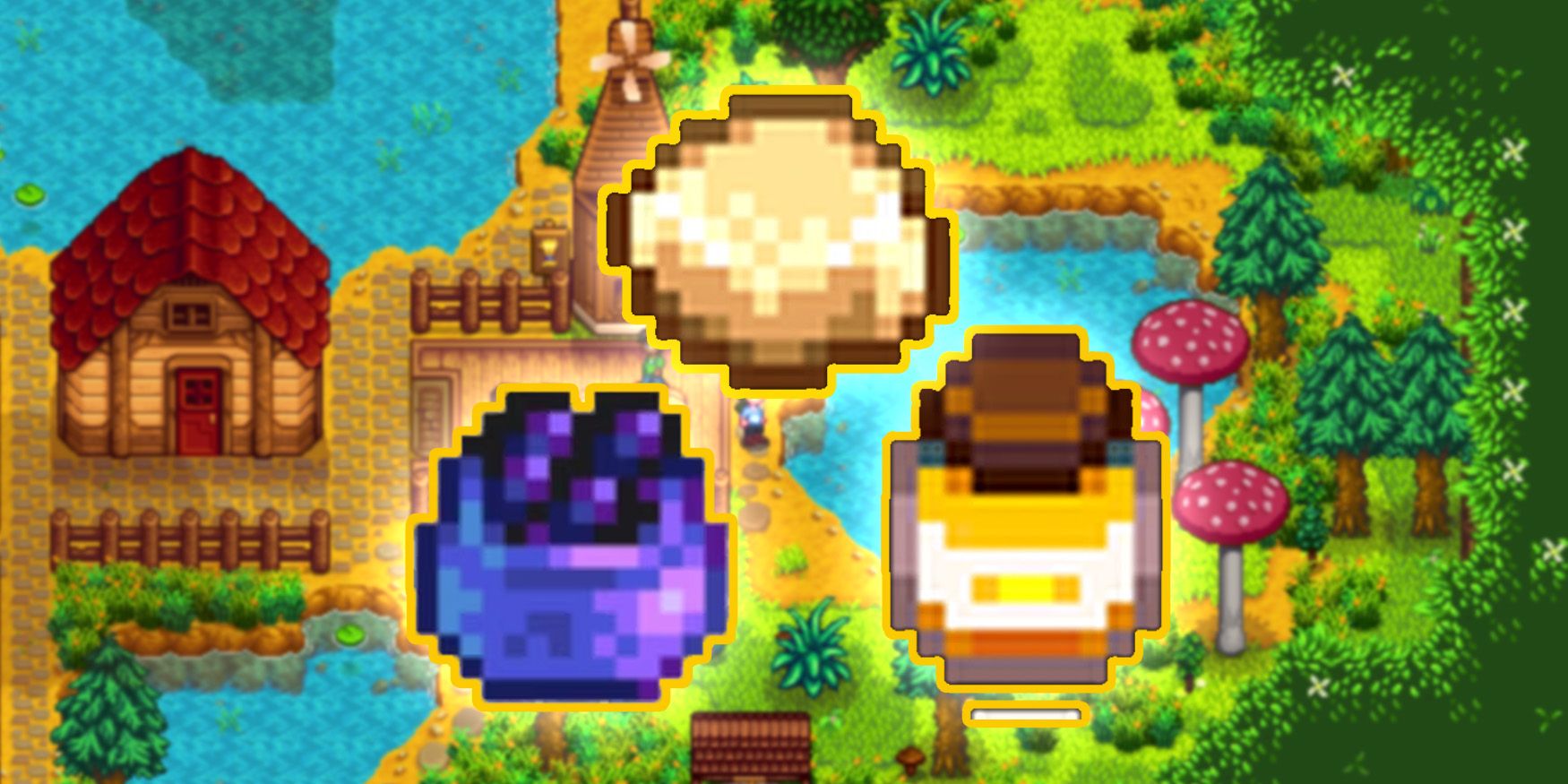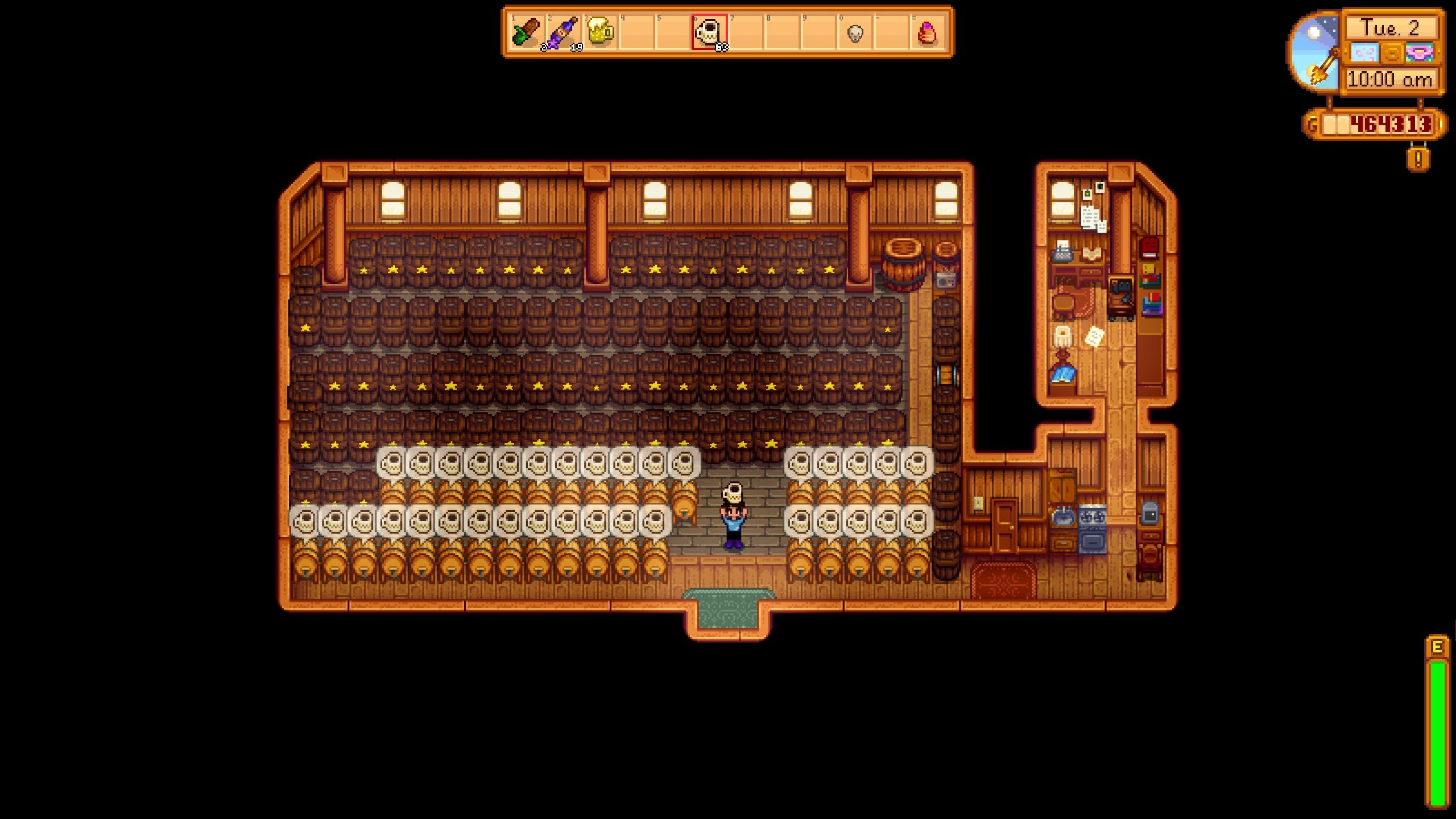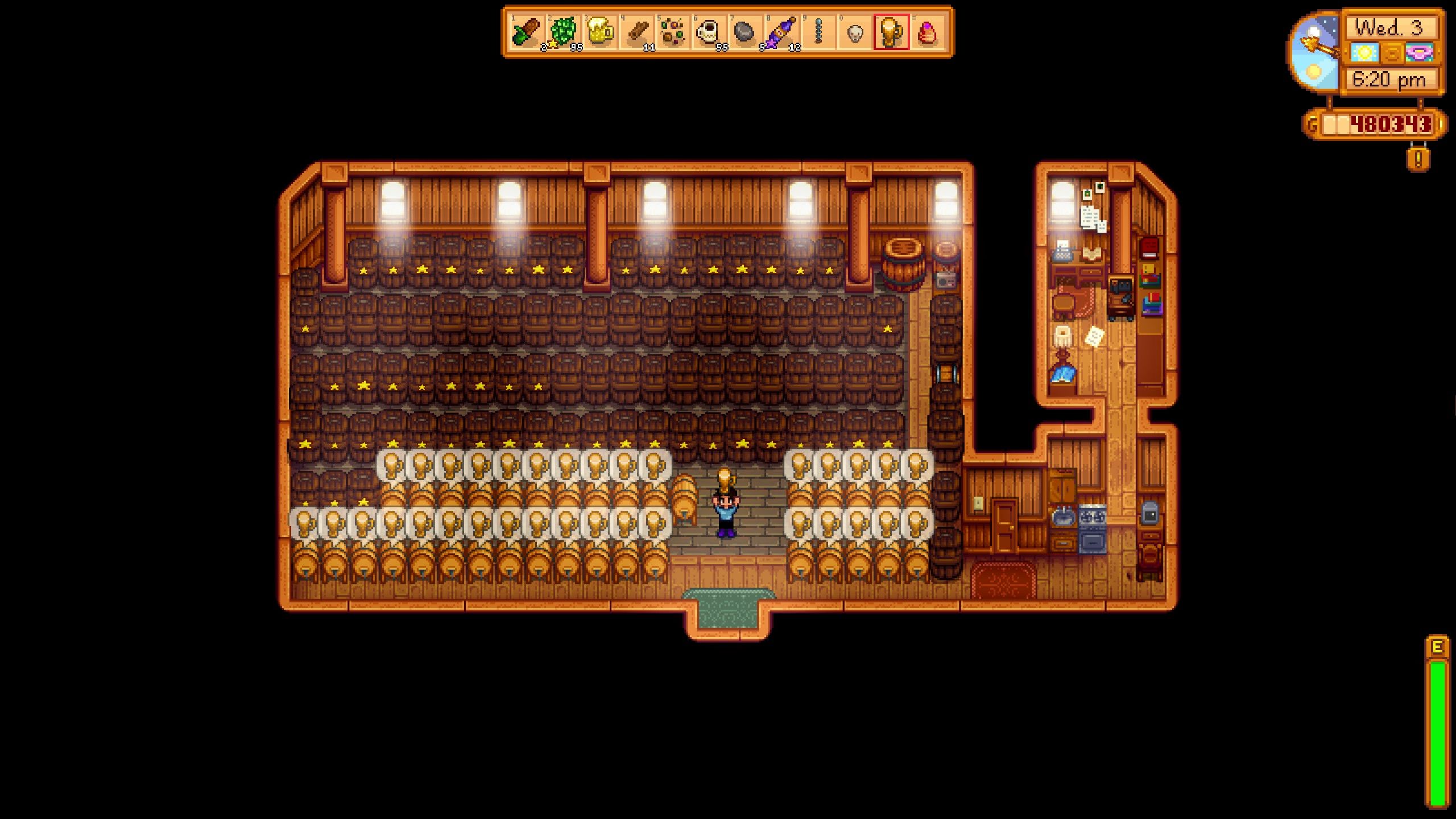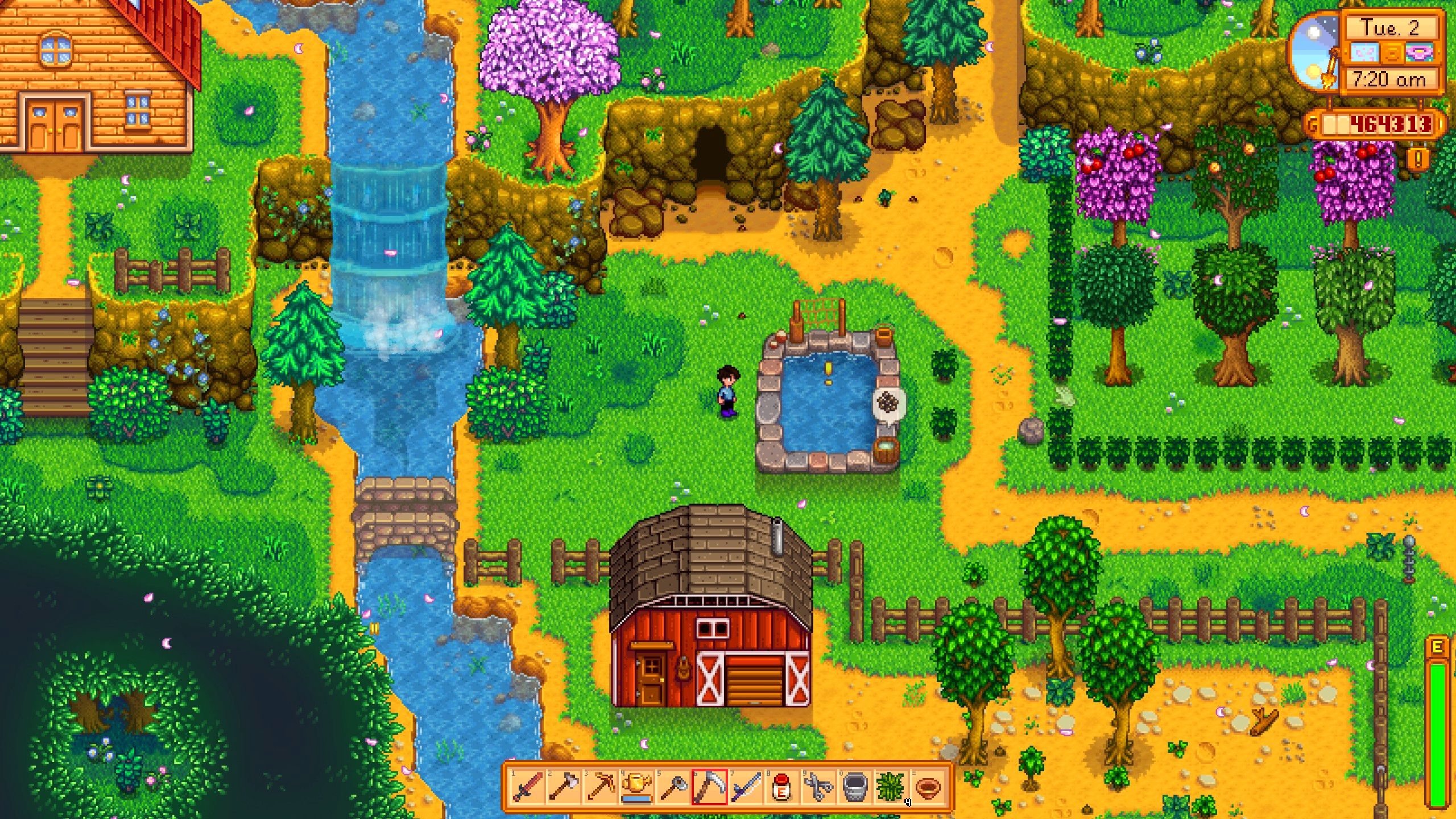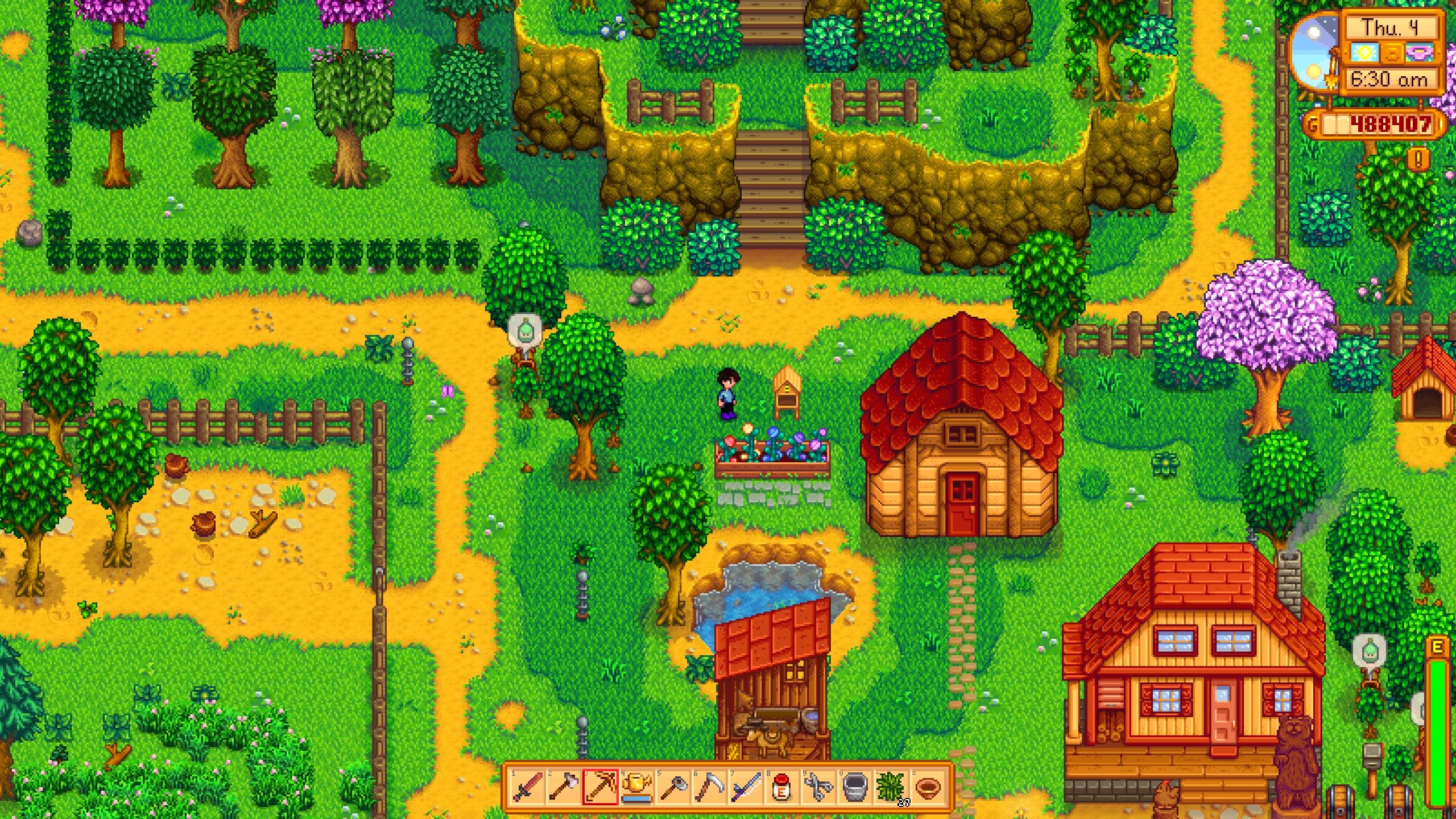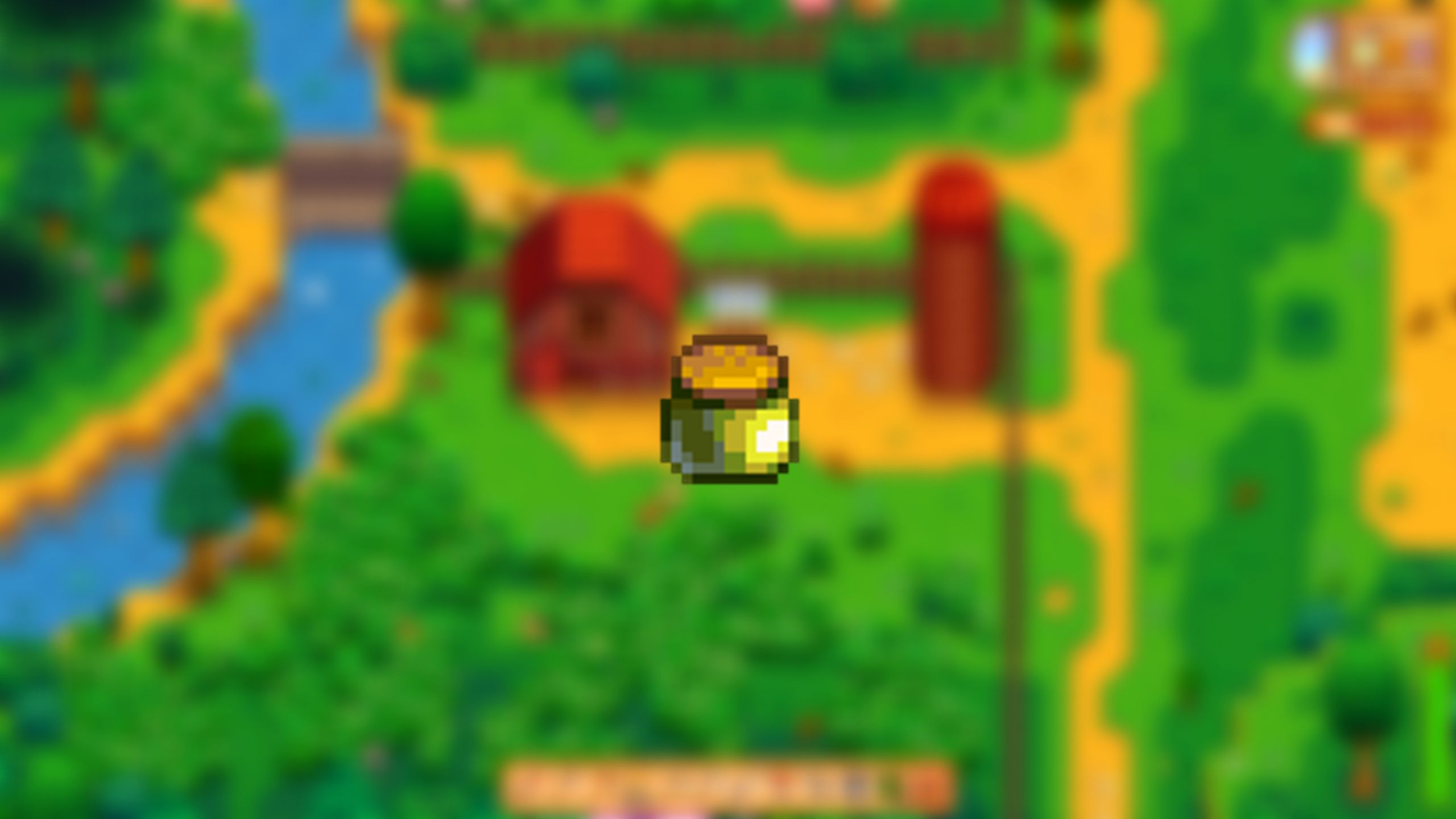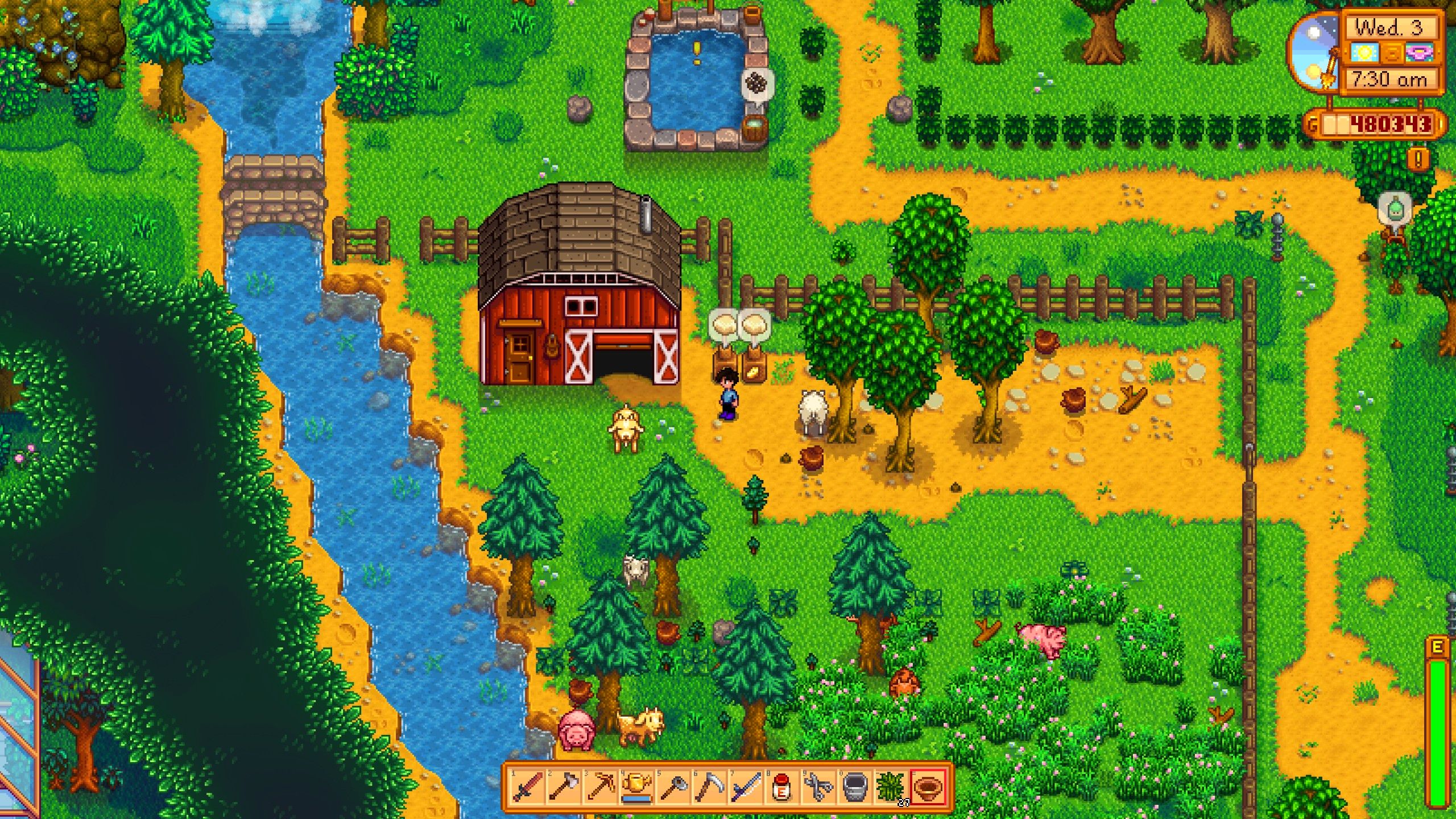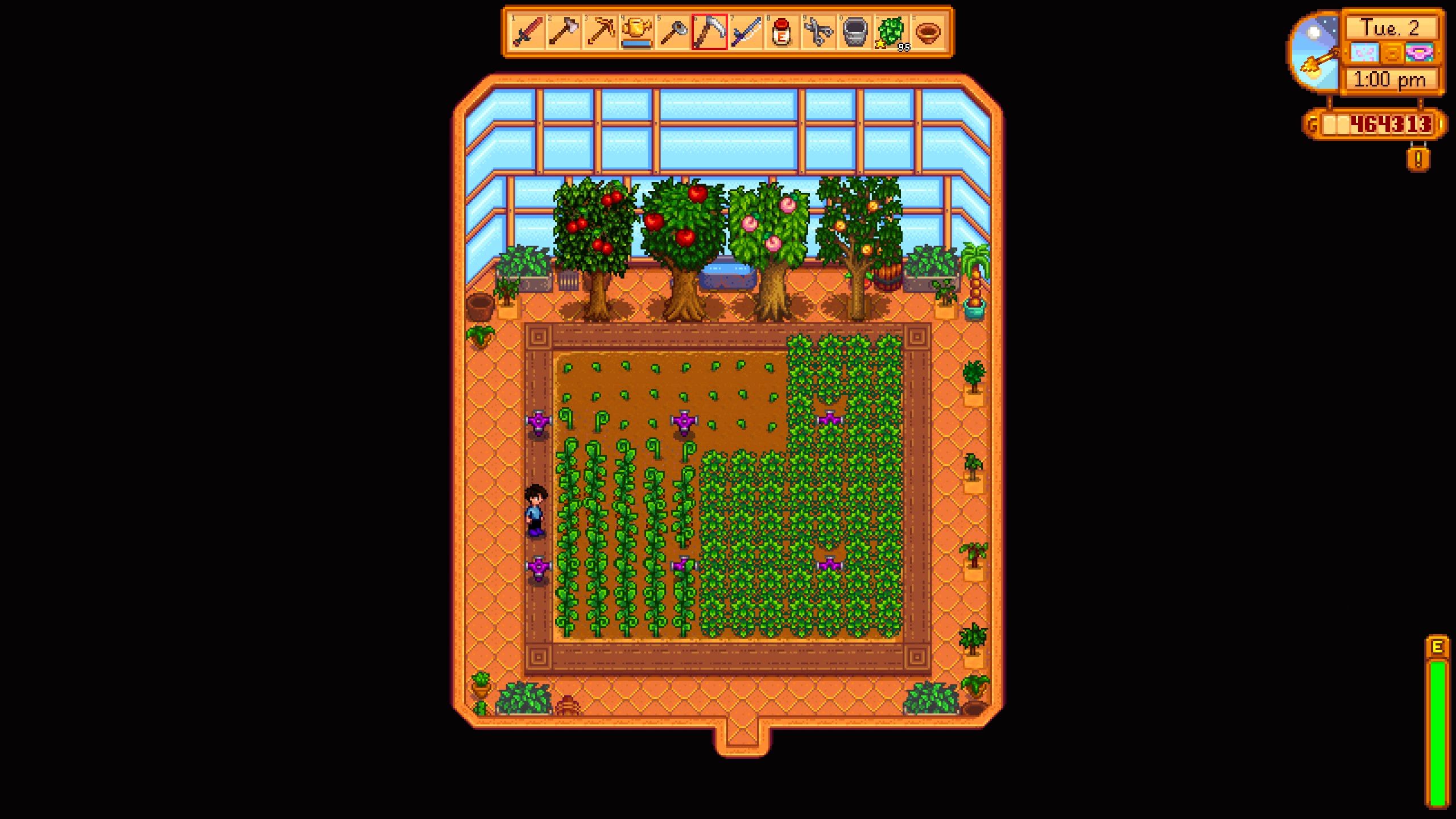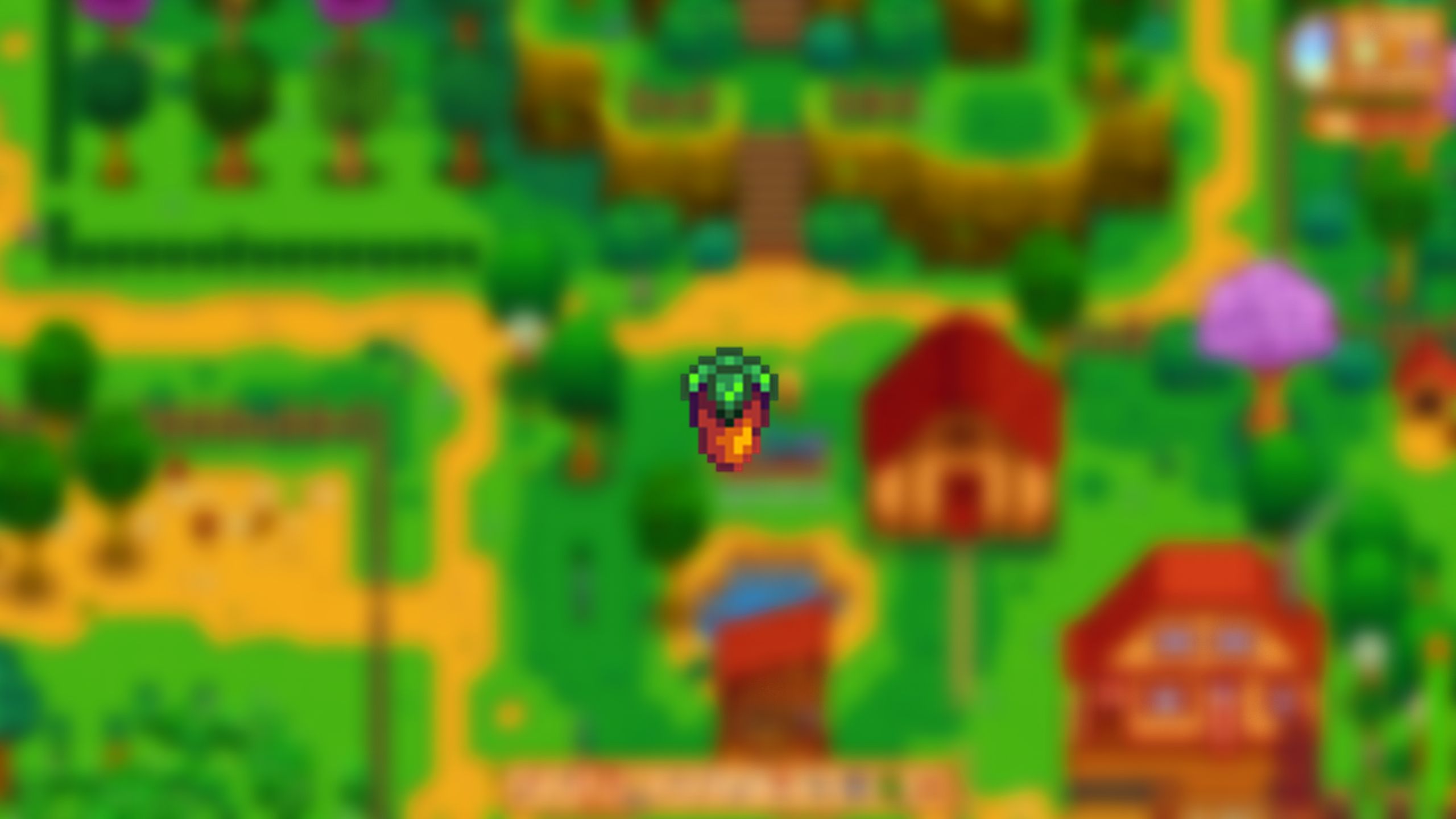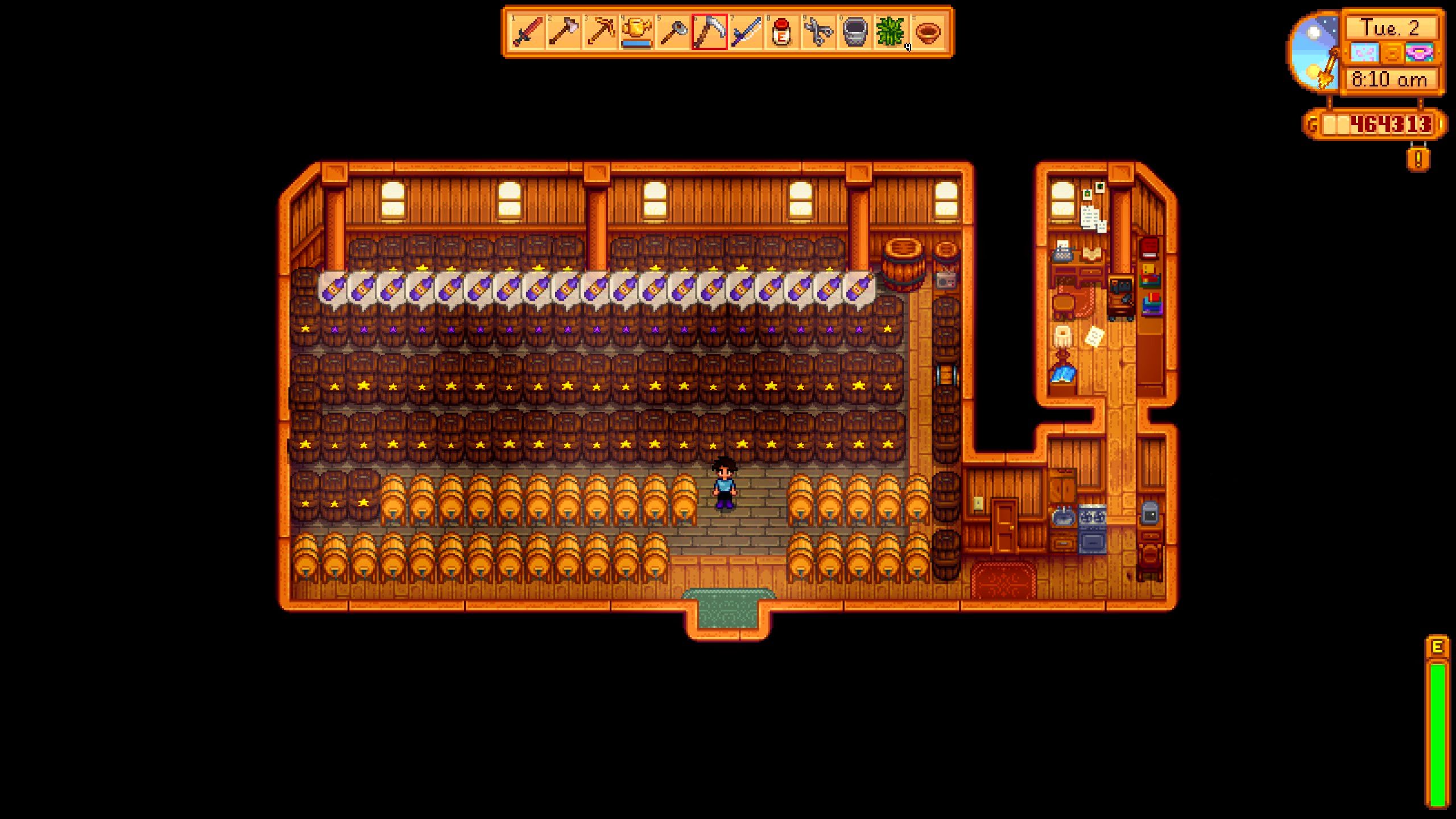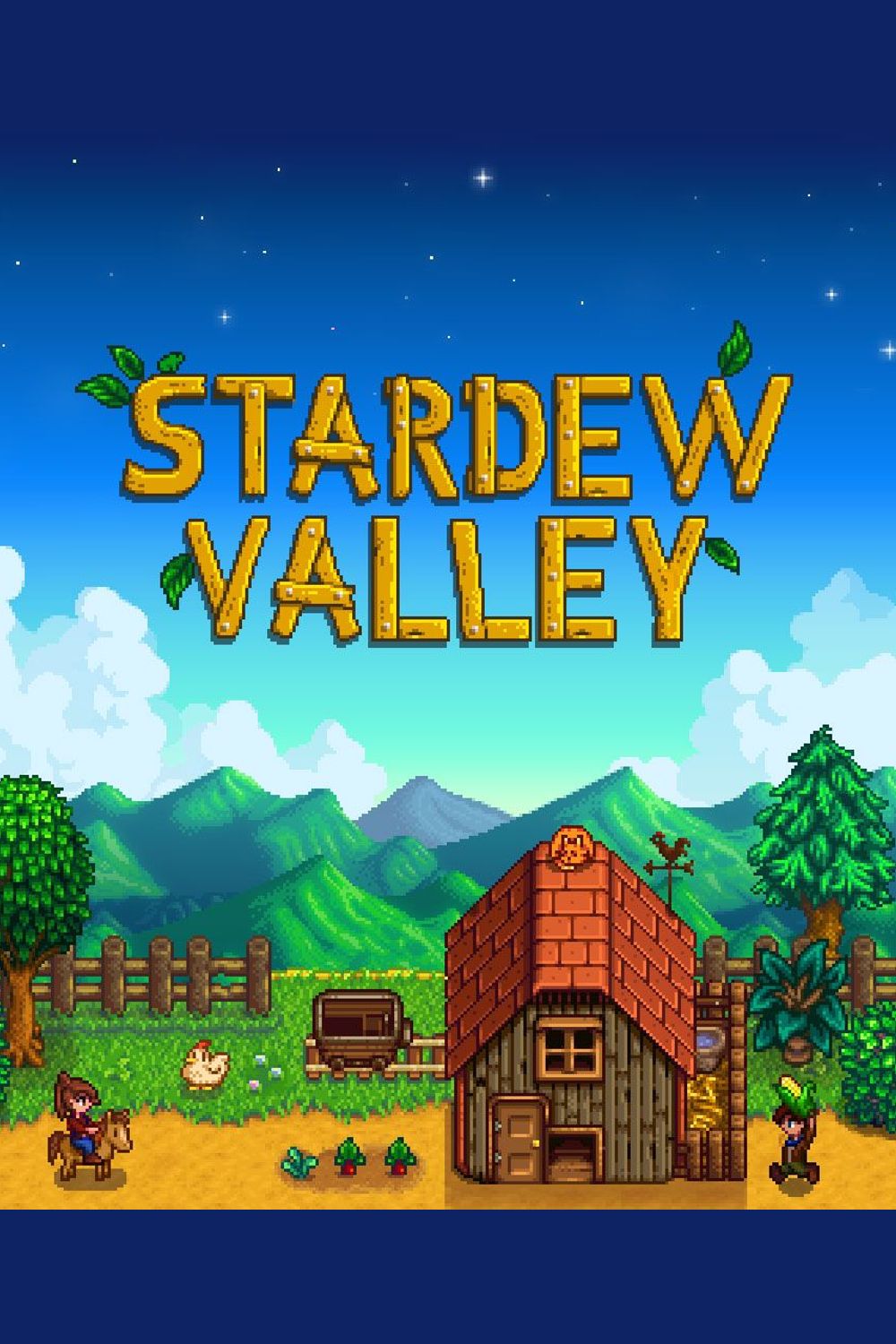When players first move into their grandfather’s old farm in Stardew Valley, one of the biggest priorities is establishing a steady cash flow by producing and selling the best items. Despite the game’s wholesome small-town atmosphere, players still need money to spend on dozens of different things. New farm buildings, livestock, tool upgrades, and plain ordinary crop seeds all require cash, and it’s often tough to decide where to start.
The best items to produce for profit will often change as the years go by. After truly settling down, players may find they can produce high-quality items that Year 1 farmers don’t have the resources to make. Growing the best crops for each season in Stardew Valley is a great start, but it’s only part of the story. Players need to consider many different factors when producing items to sell, including availability, seasonal changes, starting costs, processing time, and luck.
10 Coffee Products
Players shouldn’t ignore the benefits of growing and harvesting the humble Coffee Bean. Players will need some luck at the Traveling Cart or from killing Dust Sprites in the Mines to obtain a Coffee Bean. However, growing coffee can be incredibly rewarding.
Mature coffee plants grow in both Spring and Summer and produce four or more Coffee Beans every two days. This gives players a much wider window to expand their coffee plantations and grow even more rapidly. Each Coffee Bean can also be planted to grow a new coffee plant.
With good fertilizer and diligent watering, players can easily produce hundreds of Coffee Beans daily. Once the Keg is unlocked, players can process five Coffee Beans into Coffee, which takes only two in-game hours. Coffee sells for 150g, which isn’t a huge amount. However, as some Artisan Goods can take a week to process, Coffee Beans are far more time-efficient and easy to produce, making them a great way to earn money fast in Stardew Valley.
9 Hops and Pale Ale
Available in Summer, Hops Starters take 11 days to grow and produce Hops every single day afterward. By placing a single bushel of Hops into a Keg, players can process it into Pale Ale, an Artisan Good. According to the Stardew Valley Wiki, Pale Ale has the highest return on investment of any item in the game. A single Hops Starter will set players back 30g, but an ordinary-quality Pale Ale will sell for 300g.
Players can take things a step further by aging Pale Ale in a Cask, which raises the item's quality. An Iridium-quality Pale Ale will sell for 600g, 20 times as much as the initial cost of the Hops Starter.
With the Farming Skill at Level 10, players can pick the Artisan Profession, which adds 40% to the selling price of any Artisan Goods. Iridium-quality Pale Ale will therefore sell for an impressive 840g each.
Hops Starters are also relatively cheap, so players can grow and harvest Hops to process during the Fall and Winter seasons. Pale Ale is also a popular gift for raising friendships with villagers, although some of Stardew Valley’s marriage candidates, such as Penny, dislike it.
8 Caviar
Considered a luxury delicacy in real life, Caviar is also quite a luxury item in Stardew Valley. To make it, players need to catch a Sturgeon, a fish that only appears in the Mountain Lake during the Summer and Winter seasons. It might be worth taking advantage of a Stardew Valley mod that makes fish visible, so players can see what they are catching.
By placing the Sturgeon into a Fish Pond, players will gradually breed more fish and produce Sturgeon Roe, an item that can be processed into Caviar using a Preserves Jar. A Fish Pond is relatively cheap, and the Sturgeon isn’t a challenge to catch for players with a decent fishing rod, so Caviar production is actually fairly easy to set up, even in Year 1.
Each Caviar sells for 500g each, which goes up to 700g for players with the Artisan Profession, making players a decent amount of profit.
Players with expert fishing skills can choose to put Lava Eels, Blobfish, and Ice Pips in their Fish Ponds. Their Roe can be processed into Aged Roe, which sells for more than Caviar. However, these fish are harder to find and catch than Sturgeon.
7 Fairy Rose Honey
Players can produce Honey by planting flowers and placing a Bee House near them. Honey's quality and sell price vary, depending on which flowers players plant. The Fairy Rose, a flower that only grows in Fall, causes any nearby Bee House to produce Fairy Rose Honey. This sells for 680g each, rising to 952g for players with the Artisan Profession.
Players can process Honey into Mead using a Keg, but since the selling price of Fairy Rose Honey is so high, turning it into Mead reduces its selling price. Best of all, a single flower can affect more than one Bee House, so players don’t actually have to use up lots of space on their chosen farm layout in Stardew Valley growing fields of flowers.
Players can harvest Honey every four days: a relatively fast pace compared to many other Artisan Goods, which can take whole seasons to reach their best quality.
6 Dinosaur Mayo
Players obtain Dinosaur Mayonnaise by processing Dinosaur Eggs in a Mayonnaise Machine. This requires players to get and raise Dinosaurs in Stardew Valley by incubating the Dinosaur Egg item to spawn a baby Dinosaur. However, like growing coffee, players can quickly expand and increase production. Each Dinosaur produces Dinosaur Eggs, which can be incubated to spawn more Dinosaurs.
With a bit of patience, players can fill their Coops with Dinosaurs and start producing Dinosaur Mayonnaise. This takes three in-game hours to process and sells for 800g, an oddly low price for a product that comes from a previously extinct prehistoric animal. Players can increase this to 960g with the Rancher Profession and 1,120g with the Artisan Profession.
The in-game description doesn’t paint Dinosaur Mayo in the most positive light, claiming it smells like grass. However, most villagers, apart from Jas, Vincent, and Sebastian, like it as a gift. Players can also offer it to the Junimos for the Missing Bundle in the Abandoned Jojamart after restoring the Community Center.
5 Goat Cheese
Players make Goat Cheese by processing Goat Milk in a Cheese Press, raising its quality and selling price. Iridium quality Goat Cheese sells for 800g, rising to 1,120g with the Artisan Profession. Luckily, there are ways for players to guarantee their Goat Cheese is top quality.
Much like Wine and several other Artisan Goods, Goat Cheese can be aged in a Cask to increase its quality. It takes 14 in-game days for players to age ordinary quality Goat Cheese up to the Iridium level. However, players can cut that time in half by processing Large Goat Milk, which always produces Gold quality Goat Cheese.
Players need to take good care of their Goats to get Large Goat Milk. Ensuring they are well-fed and petted daily increases their Friendship and mood, leading to higher-quality animal products. Animal products sell for impressive prices, but players need to put in a substantial amount of care and effort to make sure they are getting the best quality.
Players can also raise Rabbits, which are often considered the best animal in Stardew Valley as they produce both Wool and the rare Rabbit’s Foot item. A high-quality Rabbit’s Foot can sell for up to 1,356g, but it tends to be quite a rare drop.
4 Ancient Fruit Wine
Wine production has a reputation among Stardew Valley players as the best way to make absurd amounts of money. The rewards can be great for players willing to spend entire seasons doing the prep work to run their own virtual vineyards and fill their cellars with Ancient Fruit Wine in Stardew Valley.
Any Fruit, including Strawberries, Bananas, and Grapes, can be turned into Wine, but the mysterious Ancient Fruit is one of the best options for winemaking. Growing Ancient Fruit in Stardew Valley involves finding and planting rare Ancient Seeds and waiting a whole 28-day season for them to grow and bear fruit. Players can place Ancient Fruit in a Seed Maker to produce more seeds. However, the 28-day growth cycle limits how quickly players can start producing Fruit and processing it into Wine.
It takes seven days to process any fruit into Wine and 56 more days to age Wine to Iridium quality in a Cask. Players who want to make top-notch Ancient Fruit Wine will have to wait three seasons for their hard work to bear fruit. However, considering that Iridium quality Ancient Fruit Wine sells for 4,620g a bottle with the Artisan Profession, it’s arguably worth the effort.
3 Ostrich Egg Mayo
To start raising Ostriches in Stardew Valley, players need to obtain an Ostrich Egg by visiting Ginger Island. Ostriches produce Ostrich Eggs, which can be placed in a Mayonnaise Machine, much like Dinosaur Eggs. However, a single Ostrich Egg produces ten bottles of Mayonnaise after three in-game hours: the same amount of time it takes to process a basic Chicken Egg into a single bottle of Mayonnaise.
By processing an Iridium quality Ostrich Egg, players will receive ten bottles of Iridium quality Mayonnaise, which sell for 380g each, rising to 532g with the Artisan Profession. A single Ostrich Egg can, therefore, net players an impressive 5,320g when processed into mayo, giving players a rather unconventional way to earn some money.
Raising Ostriches isn’t easy, as players need to have visited Stardew Valley’s Ginger Island region. This area is only available after completing the Community Center (or the Joja Warehouse) and repairing Willy’s boat. Late-game items can still be incredibly expensive, so the money players make from their Mayonnaise Machines won’t go to waste.
2 Sweet Gem Berry
To start growing Sweet Gem Berries, players must purchase and plant a Rare Seed, which can be bought from the Traveling Cart every Friday and Sunday during Spring and Summer. Players can sell a single Iridium quality Sweet Gem Berry for 6,000g, making it the highest value crop in Stardew Valley. Players can maximize their chances of obtaining Iridium quality crops by maxing out their Farming skills and placing Basic and Quality Fertilizer on tilled soil before planting.
Unfortunately, Rare Seeds only grow in Fall and take 24 days to bear fruit, so they are an ideal choice for the Greenhouse. It’s worth noting that unlike many of the most valuable crops in Stardew Valley, Sweet Gem Berries aren’t categorized as a fruit or vegetable. As such, players can’t process them to increase their sell value.
1 Starfruit Wine
Starfruit is the second most valuable crop in the game, behind Sweet Gem Berries. However, it has an advantage, as it can be processed into Artisan Goods such as Starfruit Jelly and Starfruit Wine. Iridium quality Starfruit Wine sells for 4,500g, rising to 6,300g for players in the Artisan Profession. However, much like making Ancient Fruit Wine, players will need to invest a lot of time, money, and effort to set up the necessary equipment.
Some of the best mods in Stardew Valley, such as the Tractor mod, might come in handy for growing crops efficiently.
The easiest way to get Starfruit Seeds is to purchase them from Sandy at the Oasis in the Desert for 400g each. Starfruit Seeds take 13 days to grow and bear fruit, and they only grow in Summer. However, this makes them an ideal crop for the Greenhouse, where players can grow crops from any season regardless of the climate outside.
Plenty of other items with high sell values aren’t on this list, including the Legendary Fish, which have very high sell prices but are hard to find or are limited in supply. Players should also keep in mind that Stardew Valley has lots of crops and animal products that can be sold for decent prices. Ultimately, it’s always best for players to shape their farms exactly how they want and produce their favorite items.
Source: Stardew Valley Wiki

